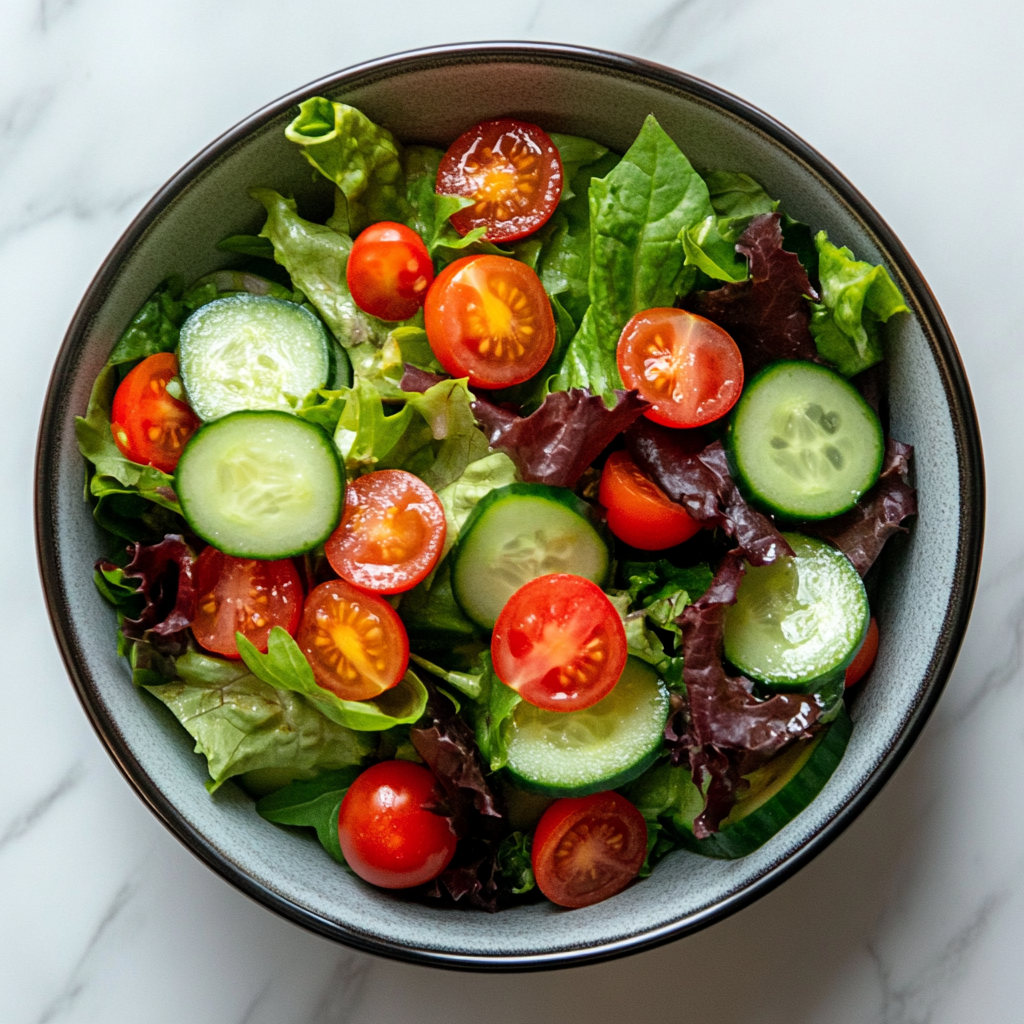When you’re mindful of your intake, even a small portion matters—and that’s where understanding 50 grams of salad calories makes all the difference. Whether you’re meal prepping or tracking macros, Knowing how many calories are in 50 grams of salad helps you stay on target. In this article, we’ll explore calorie counts, common salad types, and how to build delicious low-calorie bowls starting with 50 grams of greens. Let’s make calorie tracking simple, accurate, and flavorful.
Table of Contents
The Real Story Behind 50 Grams of Salad Calories
Understanding Salad Basics and Caloric Breakdown
Hi! I’m Alice—so happy you’re here. My love for cooking began in my family’s kitchen, where flavors and laughter blended into cherished memories. One of my earliest food memories is my mom’s garden salad. Simple, fresh, and always on the table, it was her go-to when we wanted something “light but good.” She’d toss crisp romaine, cherry tomatoes, and cucumbers in a big ceramic bowl. I’d sneak a tomato or two while pretending to help. That 50-gram scoop she’d pile on my plate? Back then, it was just salad Calories. Now, I know it held about 10–15 calories—pure and nutrient-packed.
Let’s make calorie tracking simple, accurate, and flavorful—especially when starting with 50 grams of salad calories.
Fast forward to today, and I still lean on those humble greens. Whether I’m prepping for a summer brunch or creating a make-ahead lunch from my Healthy Salads collection, the simplicity of 50 grams of salad Calories remains a go-to. Most leafy 50 grams of salad calories from greens are incredibly low—usually under 15 kcal. That scoop may seem light, but knowing the exact 50 grams of salad calories tells you what you’re really eating.
These greens keep your meal light and refreshing, and starting with 50 grams of salad calories means you’re eating clean right from the base.
The Power of Knowing What’s in Your Bowl
Even with added toppings, you can control your intake starting from 50 grams of salad calories. Understanding how each ingredient adds up is key to building satisfying, nourishing bowls without overdoing it.
When I make a chicken-topped Caesar, I always weigh the greens first. Weighing your greens reveals just how light 50 grams of salad calories actually are—often a great base to build from without guilt.
Ingredient Swaps That Keep Calories Low
Use crunchy veggies like bell pepper, radish, or cucumber to add texture while keeping your 50 grams of salad calories minimal. Light dressings and herbs are a great way to keep 50 grams of salad calories from creeping up with excess fat or sugar.
Reducing heavy toppings like cheese, fried croutons, or thick ranch lets your 50 grams of salad calories stay lean and guilt-free—especially when prepping for summer meals.
Why I Measure Every Time
Most people skip measuring, but knowing your 50 grams of salad calories gives you clarity on portions and helps with mindful eating. I prep weekday lunches by portioning out 50 grams of salad calories into glass containers—it’s a small habit with big impact.
Final Thoughts
While many assume salads are low-calorie by default, understanding your 50 grams of salad calories is essential to avoid surprises—especially with restaurant or pre-made salads. Control starts with your base—and it all begins with 50 grams of leafy goodness.
| Type of Green | Calories (50g) |
|---|---|
| Romaine Lettuce | 8 kcal |
| Spinach | 12 kcal |
| Arugula | 13 kcal |
| Iceberg Lettuce | 7 kcal |
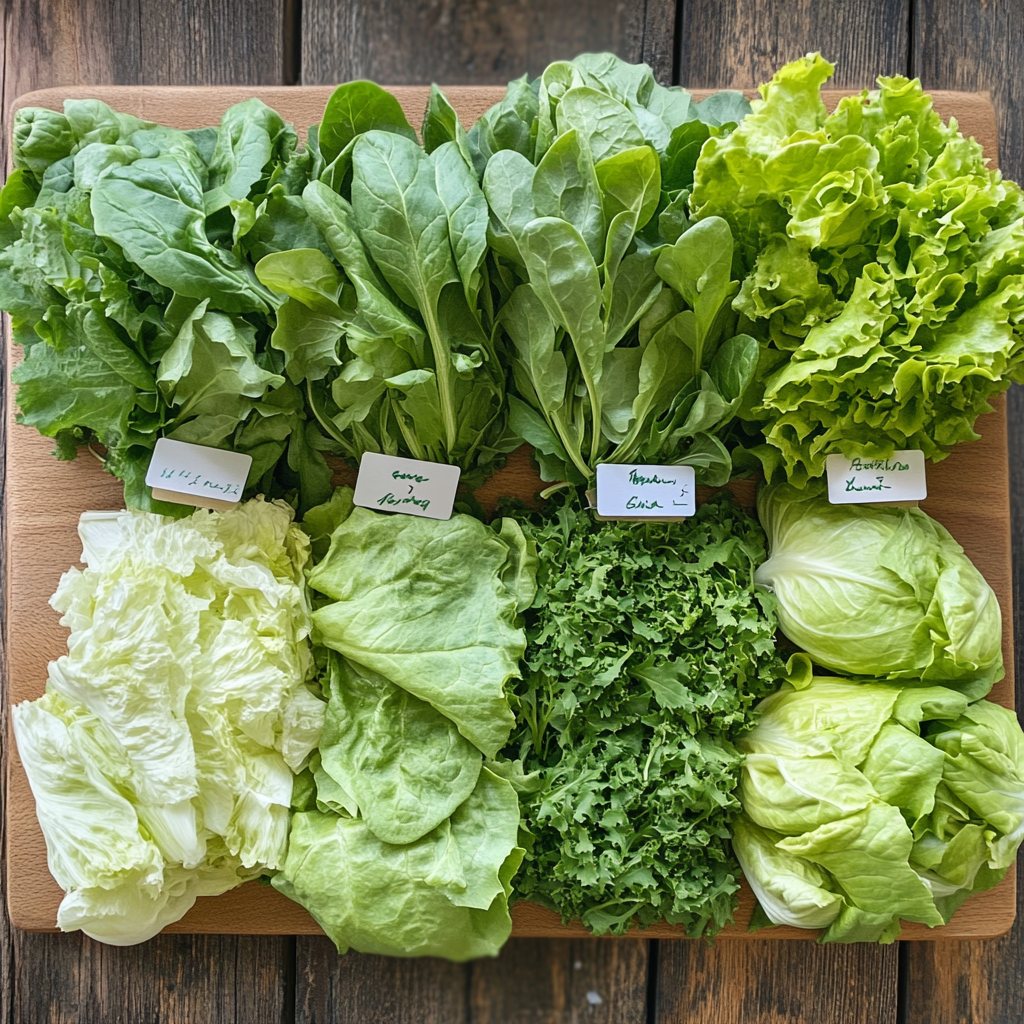
So if you’re tossing together a quick bowl using 50 grams of greens, you’re barely tipping past 10–15 calories. This makes it the ideal base for anyone watching their intake.
Why 50 Grams Isn’t Always Just “50 Calories”
But here’s the twist—salad isn’t just greens. Add-ins like avocado, cheese, seeds, or even a spoonful of vinaigrette can dramatically change the number. That’s where calorie creep begins. For example, 1 tablespoon of olive oil alone adds 119 calories. That turns a 15-calorie salad into a 130+ calorie dish, even before the toppings.
I often encourage readers to view salads not by weight alone but by composition. Want a 50g salad under 50 calories? Skip the creamy dressings and cheese crumbles. Instead, lean into flavor using herbs, lemon juice, or a touch of balsamic glaze. You can also find more clean eating swaps on our Smart Kitchen Ingredient Guide, where we break down every spoonful.
Calories in Different Salad Types – More Than Just Greens
How Many Calories Are in 100g of Salad?
Scaling up from 50g to 100g might seem like a simple doubling—but remember, it depends entirely on what’s in that extra scoop. A bowl with just greens? Still light. But one with chickpeas, tuna, or creamy dressing? Suddenly we’re looking at a full meal.
Here’s a comparison for context:
| Salad Type (100g) | Estimated Calories |
|---|---|
| Mixed Greens Only | 12–20 kcal |
| Greek Salad (with feta & olives) | 120–150 kcal |
| Caesar Salad (with dressing) | 160–180 kcal |
| Tuna Salad (with mayo) | 200+ kcal |
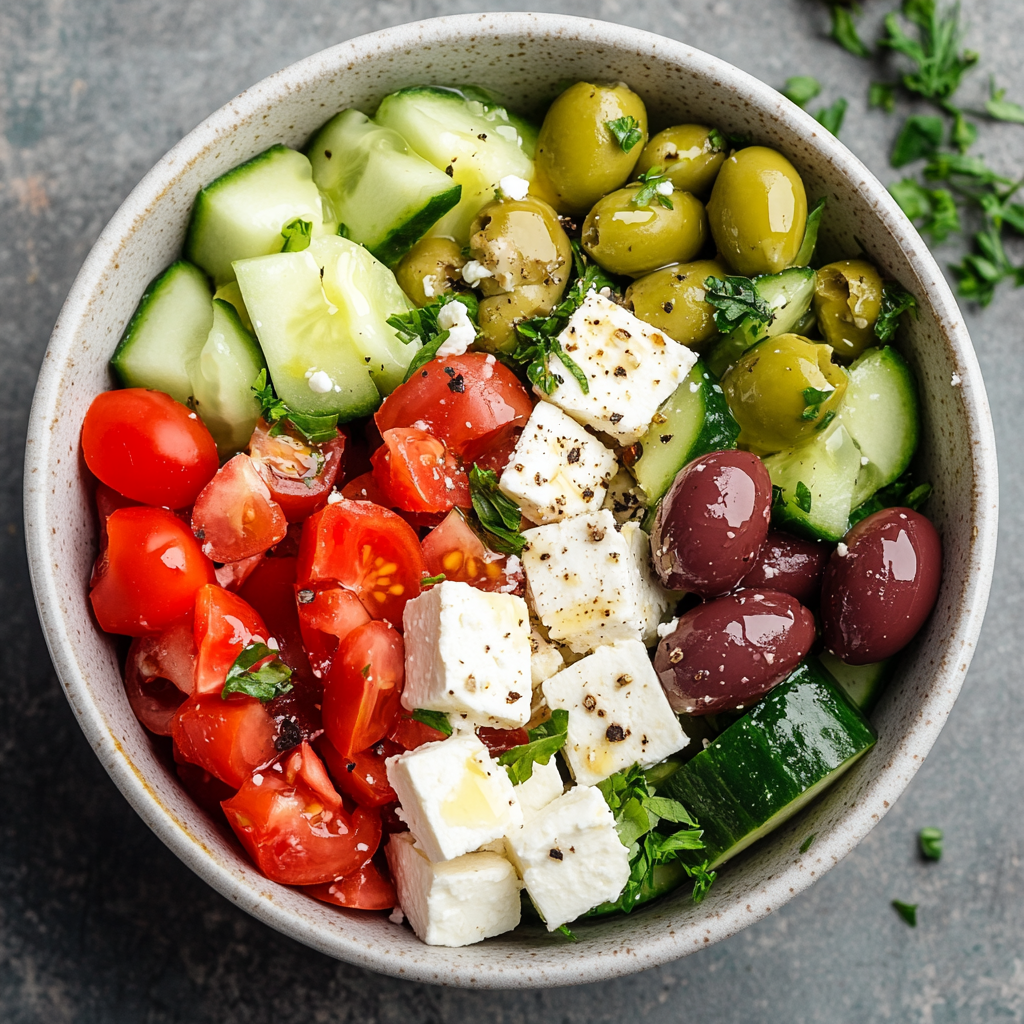
So yes—100g of salad can be as little as 12 calories or well over 200, depending on what you toss in.
If you’re counting every bite, I suggest tracking ingredients with a digital scale or using a calorie calculator app. I’ve linked a guide on tracking kitchen calories that walks you through common mistakes to avoid.
Is 500 Calories a Lot for a Salad?
Let’s get real: salads aren’t automatically “light.” A salad Calories with chicken, dressing, seeds, avocado, and cheese can reach 500+ calories fast. And that’s not a bad thing—if it’s your whole meal.
Here’s what typically adds up in a 500-calorie salad:
- 85g grilled chicken breast: 140 kcal
- 1/2 avocado: 120 kcal
- 1 tbsp olive oil: 119 kcal
- 1 oz feta: 75 kcal
- 50g mixed greens: 10–15 kcal
Total: ~470–500 kcal
That’s actually a balanced, protein-rich meal. So no, 500 calories isn’t “a lot” if the ingredients offer fiber, healthy fats, and satiety.
But if your goal is a light starter or snack, a 500-calorie salad might overshoot it. For lighter versions, explore our Low-Calorie Salad Recipes where flavor meets moderation.
Also, avoid calorie traps like crispy toppings, sugary vinaigrettes, or croutons fried in butter. They sneak in fast.
Salad Bowl Calories – What’s Really in That Serving?
How Many Calories Are in 1 Bowl of Salad?
One of the most frequent nutrition questions I get is, “How many calories are in a bowl of salad?” The answer? It totally depends on the size of the bowl and the ingredients inside it. Not all bowls are created equal!
If your salad bowl is filled with just 50–100 grams of greens and veggies, you’re likely under 50 calories. But if you’re building a full lunch bowl—think quinoa, black beans, corn, and avocado—calories rise fast.
To give you an idea, here’s a basic comparison:
| Bowl Type | Average Weight | Calorie Range |
|---|---|---|
| Simple Veggie Salad | 100–150g | 20–40 kcal |
| Protein-Packed Chicken Salad | 200–300g | 300–500 kcal |
| Quinoa Veggie Bowl | 250g+ | 400–550 kcal |
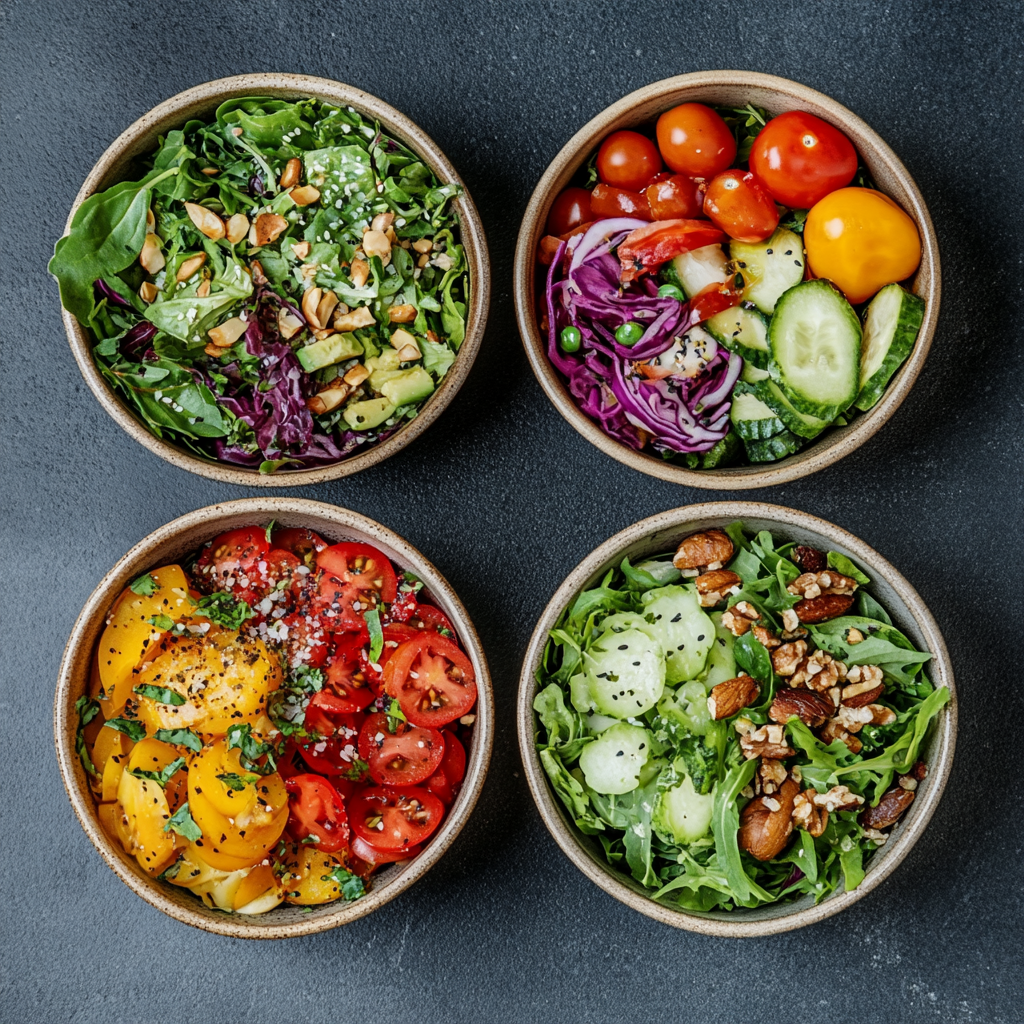
So when someone says “one bowl of salad,” the calorie range can stretch from 20 to over 500. Want to keep it light? Stick to a base of leafy greens with fresh veggies like cucumber and tomato.
Need something heartier? Add grilled protein and grains—but be mindful of portion sizes and dressings.
Find my High-Protein Salad Bowls collection to explore options that balance nutrients and flavor beautifully.
Portion Sizes: Why Visuals Can Be Misleading
Here’s a little kitchen trick I learned from my grandma: always know your portion by weight, not just by eye. A “small bowl” of salad may look modest but might pack 250 grams—especially if it’s loaded with heavier items like beans, chickpeas, or pasta.
When I create salads for meal prep, I always weigh out 50g for a side salad or 200g for a main. That way, I can balance the rest of my plate. It’s a habit I swear by, and it’s especially helpful if you’re tracking macros or managing weight goals.
Want to improve your food measuring game? My post on smart salad prep tools covers kitchen scales, meal containers, and salad spinners that save time and calories.
Building a Low-Calorie Salad That Actually Fills You Up
Smart Ingredients That Keep Salads Light but Satisfying
Starting with 50 grams of salad as your base is a great way to keep calories low, but the trick is making it satisfying so you’re not rummaging for snacks an hour later. The key? Bulk and balance.
I always recommend starting with greens like spinach or arugula—nutrient-dense yet low in calories. Then, layer in water-rich vegetables like cucumbers, celery, and tomatoes. Not only do they add crunch, but they help you feel full without adding much to the calorie count.
Here’s a sample low-calorie but filling combo:
- 50g arugula – 13 kcal
- 50g cucumber – 8 kcal
- 50g cherry tomatoes – 9 kcal
- 25g shredded carrots – 10 kcal
- 1 tbsp balsamic vinegar – 10 kcal
Total: ~50 kcal
That’s a big, vibrant bowl for under 60 calories—and you can dress it up with herbs like parsley or basil without adding a single calorie.
For more low-cal dressing ideas, check out our Healthy Dressing Swaps that add flavor without fat.
Simple Swaps to Reduce Salad Calories Without Losing Flavor
Let’s be honest—many people ruin their healthy salads with the wrong toppings. Here are some easy swaps I use regularly to keep calories down while boosting taste and nutrition:
| High-Calorie Ingredient | Smart Low-Calorie Swap |
|---|---|
| Creamy ranch dressing (140 kcal/tbsp) | Greek yogurt + herbs (25 kcal/tbsp) |
| Croutons (110 kcal/oz) | Toasted chickpeas (50 kcal/oz) |
| Bacon bits (90 kcal/tbsp) | Smoked paprika or mushrooms |
| Shredded cheddar (120 kcal/oz) | Nutritional yeast (20 kcal/tbsp) |
Want a richer salad without going overboard? Try roasted veggies for a warm twist—just keep the oil minimal. I roast sweet potatoes with paprika, garlic, and a tiny drizzle of olive oil, then toss 30g into a salad. It adds flavor, texture, and only about 35 calories.
You’ll find more creative salad toppings in my Smart Salad Enhancers guide, where we rethink crunch and creaminess without blowing your calorie budget.
Conclusion
Salads are one of the most versatile meals you can build—and the calorie count of 50 grams of salad depends entirely on what’s in the mix. Start with leafy greens, keep portions smart, and use flavorful, low-calorie ingredients to bulk up your bowl. Whether you’re watching calories, boosting fiber, or just trying to eat clean, mastering portion awareness makes all the difference. Keep salad simple, satisfying, and always delicious—and let it be a nourishing part of your day, not a guessing game.
For more inspiration, dive into our Salad Recipes or browse our Low-Calorie Meal Library.
By using 50 grams of salad calories as a portion guide, you’ll feel more in control of your meals without sacrificing flavor.
for more recipes follow me in page facebook and pinterest .
FAQs
How many calories are in 50g of salad?
If it’s just leafy greens like romaine, arugula, or spinach, 50g of salad contains between 7 and 15 calories. However, the calorie count rises if you include toppings or dressings.
How many calories are in 100g of salad?
That depends on the ingredients. A 100g salad made only of greens and vegetables can be under 30 calories. But add-ins like cheese, chicken, or oil can raise it to 150–300 calories.
Is 500 calories a lot for a salad?
Not necessarily—it depends on your goals. A 500-calorie salad with protein, fiber, and healthy fats can be a balanced meal. But if you’re aiming for a light snack or side, it might be excessive.
How many calories are in 1 bowl of salad?
A “bowl” can range from 100g to over 300g. A basic veggie bowl may have only 40–60 calories, while a full entrée salad with meat and dressing can exceed 400–600 calories easily.
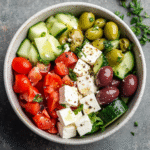
50 Grams of Salad Calories: What You Need to Know for Smart Eating
- Total Time: 5 minutes
- Yield: 1 serving 1x
- Diet: Vegetarian
Description
A crisp, refreshing salad based on 50 grams of salad calories—perfect as a light meal or side. Packed with hydrating vegetables and flavor without the calorie overload.
Ingredients
50g fresh arugula
50g sliced cucumber
50g cherry tomatoes, halved
25g shredded carrots
1 tbsp balsamic vinegar
Salt and pepper to taste
Instructions
1. Rinse all vegetables thoroughly under cold water.
2. Place the 50g of arugula into a bowl as your base.
3. Add cucumber slices, halved cherry tomatoes, and shredded carrots.
4. Drizzle with 1 tbsp balsamic vinegar.
5. Sprinkle salt and pepper to taste.
6. Toss gently and serve immediately.
Notes
You can add fresh herbs like parsley or basil without increasing the calories.
To turn this into a meal, add grilled chicken or tofu—but remember, that will increase calories.
- Prep Time: 5 minutes
- Cook Time: 0 minutes
- Category: Salad
- Method: No-cook
- Cuisine: American
Nutrition
- Serving Size: 1 bowl
- Calories: 55
- Sugar: 4g
- Sodium: 40mg
- Fat: 1g
- Saturated Fat: 0g
- Unsaturated Fat: 1g
- Trans Fat: 0g
- Carbohydrates: 9g
- Fiber: 2g
- Protein: 1g
- Cholesterol: 0mg

